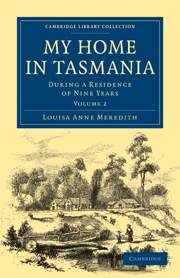Summary
One family of birds may invariably be found in this island wherever there is grain for them to steal, and these are the handsome, merry, impudent, wicked, rambow-plumag'd, thieving parrots. The common kind, attired in shaded green, with a yellowish breast, and a few blue feathers in the wings and tail, is the most daring and incorrigible. These beset the stack-yard in legions, literally covering some of the ricks, and terrible is the havoc they commit, clawing off the thatch and scooping caverns beneath, into which they retreat when attacked, and peep out in the most provoking way imaginable, crying continually “cushee—cushee—cushee!”—and, when assailed by volleys of sticks or stones, will often only bob down their round saucy heads, or hop aside to avoid a blow, and go on coolly pecking the ears of corn they hold in their claws, as if the assault were a most unprovoked and unwarrantable one.
They are not deemed worth powder and shot, but may be knocked down with sticks, and when skinned are tolerably good in pies.
All our parrots here have long tails, and are what I should in England have called parroquets. The stuffed specimens in museums, and in Gould's magnificent work on Australian birds, have probably made the chief of them familiar to my readers. The Rose-hill, or Rosella parrot, is the gayest of the family indigenous to Tasmania; the brightest and most positive colours are distributed over its brilliant attire with such startling contrasts as would be unpleasantly gaudy in anything but a bird.
- Type
- Chapter
- Information
- My Home in TasmaniaDuring a Residence of Nine Years, pp. 28 - 39Publisher: Cambridge University PressPrint publication year: 2010First published in: 1852

